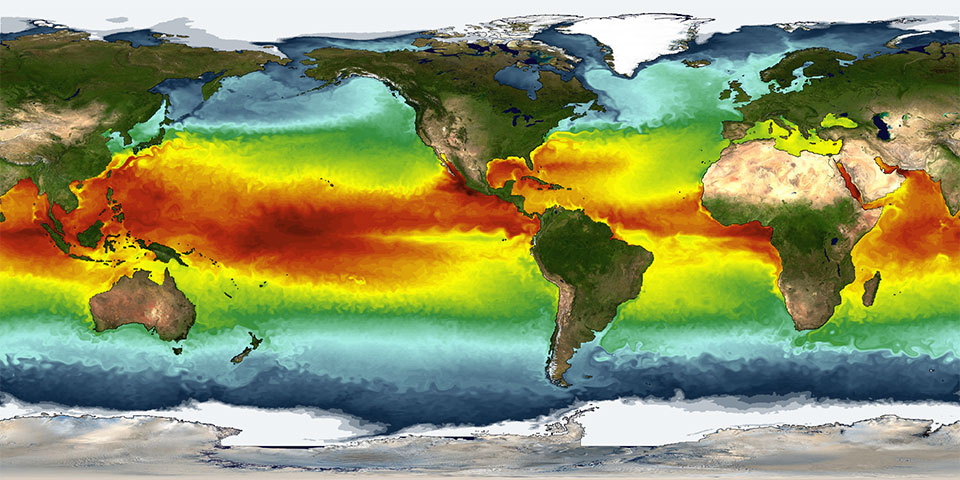Why do scientists measure sea surface temperature?
Sea surface temperature provides fundamental information on the global climate system.

A simulation of sea-surface temperatures from the Geophysical Fluid Dynamics Laboratory. This model inspired the U.S. Postal Service to create a Forever international rate stamp, released on Earth Day in 2014.
Because the ocean covers 71 percent of Earth's surface, scientists record sea surface temperature (SST) to understand how the ocean communicates with Earth's atmosphere. SST provides fundamental information on the global climate system. SST is an essential parameter in weather prediction and atmospheric model simulations, and is also important for the study of marine ecosystems.
SST data are especially useful for identifying the onset of El Niño and La Niña cycles. During El Niño, temperatures in the Pacific near the equator are warmer than normal. During La Niña, the same area experiences colder than normal ocean temperatures. These cycles are caused by multiyear shifts in pressure and wind speeds, and affect ocean circulation, global weather patterns, and marine ecosystems.
SST measurements benefit a wide spectrum of operational applications, including climate and seasonal monitoring/forecasting, military defense operations, validation of atmospheric models, sea turtle tracking, evaluation of coral bleaching, tourism, and commercial fisheries management.
To measure SST, scientists deploy temperature sensors on satellites, buoys, ships, ocean reference stations, and through marine telemetry. The NOAA-led U.S. Integrated Ocean Observing System (IOOS®) and NOAA's Center for Satellite Applications and Research (STAR) merge their data to provide SSTs worldwide.
Get Social
More Information
Did you know?
The Earth emits radiation in both the infrared and microwave wavelengths, and the extent of these wavelengths varies with the temperature of the ocean. Satellite sensors measure these varied temperature bands from space to calculate sea surface temperature.

Last updated: 01/18/24
Author: NOAA
How to cite this article